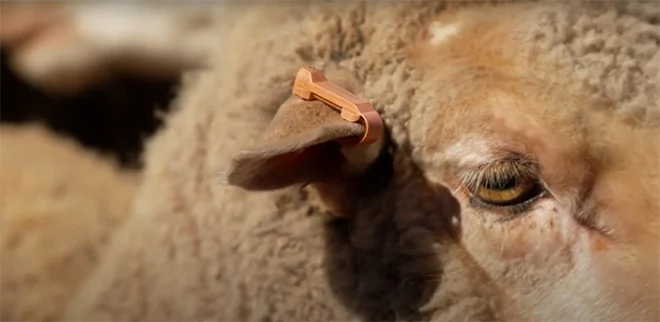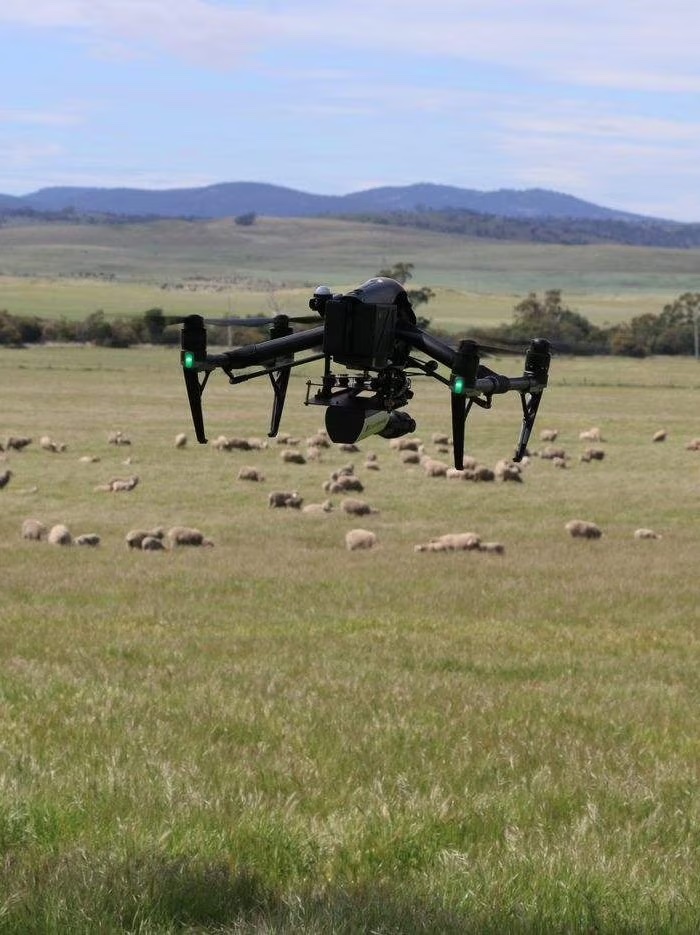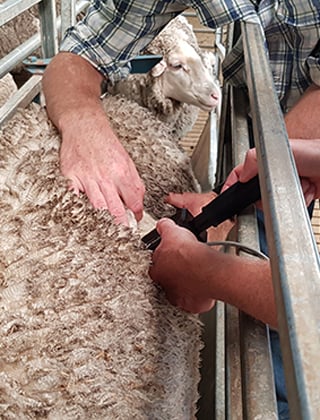Making EID work for you
.jpg/Zz0zMzhkZjFlYTU3YTUxMWYwYWMyMDUyZTc5YjU1NzQyMA==)
EID is now mandatory, however, it offers woolgrowers a powerful tool to improve flock productivity through better data and decision-making. Starting simple with a wand reader and basic software can lead to valuable insights, especially when key data is recorded early. This article covers how to get started and make it work for your enterprise.
Electronic Identification (EID) for sheep is now mandatory in Western Australia. For WA woolgrowers, this presents a valuable opportunity to collect meaningful data, gain deeper insights into flock performance and make more informed decisions on-farm.
Recently, AWI Extension WA held a webinar on “Using EID for Profit and Productivity” to help WA woolgrowers get started with or improve their use of EID to support better decision-making. We encourage you to check out the recording if you haven’t already — you can view it here.
During the webinar, expert Mark Ferguson from neXtgen Agri and Kojonup woolgrower Ben Webb of Marbarrup Farms share their practical tips and experiences on how to leverage EID beyond compliance to boost farm profit and productivity.
Beyond compliance: The opportunity EID presents
Electronic Identification offers significant benefits beyond simply meeting regulatory requirements, particularly for woolgrowers aiming to take their sheep to the next level.
- Learn more about your enterprise through valuable data - EID enables you to record important information about individual animals. While the benefits might not be immediate or obvious, over time, the data builds up and supports better decision-making
- Improved efficiency and accuracy - Recording data becomes far more efficient and accurate compared to reading visual tags and manually entering information into notebooks or spreadsheets. Errors like double entries are common with manual systems. EID makes the process quicker and reduces mistakes
- Integrated data collection - EID is a great opportunity to collect data while sheep are already in the yards, avoiding the need to handle them unnecessarily. You can simply integrate EID data collection into your existing sheep management schedule
Getting started – crawl before you walk
A key message from both presenters was that you don’t need to start with the most expensive equipment. Key tips included:
- Start simple - Begin with an EID reader (wand). Ben Webb shared that he’s not very tech-savvy, but using a stick reader synced to a phone, tablet or laptop was a great starting point. You can do a lot with just a stick reader
- Build up - You don’t need a huge initial investment to gather useful data. However, don’t collect data unless you know what you want to use it for. Keep it simple, record only what’s necessary for your goals and expand from there
- Utilise service providers - Service providers can help set up your system and support ongoing data management and analysis
- Seek help - If technical issues arise, support from equipment or software providers is usually excellent, often including remote access to resolve problems directly on your device
The power of data
Mark Ferguson highlighted the real value of EID — the ability to easily connect data collected at different points in time for the same animal. This allows you to track performance, assess responses to management decisions and make more informed choices.
EID enables easy linkage of events like joining, scanning, condition scoring and weighing, helping you spot trends across your flock that would be difficult or time-consuming to identify otherwise.
Practical examples of using EID data
- Understanding farm and pasture performance - Linking EID tags to weaning weights and paddock records allows you to identify which areas deliver better results. This helps decide where to place different mobs, such as twins or singles
- Informing mating and feeding decisions - Understanding the relationship between ewe weight or condition score at joining and scanning results is crucial (e.g., weighing at ram-in and then pre-scanning). EID allows you to collect this data easily, helping you evaluate responsiveness and improve outcomes
- Improving culling and selection accuracy - EID makes it easier to make informed culling decisions based on measurable traits.
- Avoid bias against twins - Both visual classing alone and simply selecting on traits like fleece weight can inadvertently lead to culling twins disproportionately. By recording whether an animal is a single or twin using EID, you can avoid this bias in your selection process. Simply noting which tag sequences correspond to twin or single mobs at lamb marking allows you to draft them separately for classing later
- Leveraging data for culling - Using combined data — pregnancy history, health, weights, condition scores — allows you to identify underperforming animals more accurately and retain the most productive ewes
- Tracking health and structure - EID makes it easy to record observations like dag score, wrinkle score or foot issues. Dag scoring was highlighted as a simple, repeatable and heritable trait that can be easily recorded and impact flock performance
- Monitoring performance on different feeds - Ben Webb shared how he tracks lamb weight gains on different fodder crops like lupins and faba beans. EID allows him to quantify which feeds provide the best growth
- Fleece weights and micron - During shearing, Ben Webb scans his sheep with the stick reader, which connects to a bar code printer that matches the sheep that’s been shorn. This way, he can identify who the fleece belongs to once you get our micron and yield tested, which then goes into the system using the EID
- Muscle and fat scanning, fleece weights and ram condition pre-joining - Ben Webb scans for back fat, eye muscle depth, body weight and condition score before his rams go out and connects this data to his rams using EID. A portion of Ben’s rams are non-mulesed, so he finds it interesting to compare body weights and fleece weights with the sheep that are mulesed using EID
Collecting crucial foundation data
One of the most critical points made was the importance of capturing key life data early on. Lamb marking is a crucial time to collect data using EID. Recording whether a lamb was born a single or a twin, or out of a maiden vs. mixed-age ewe, should ideally happen at lamb marking. If this information isn't recorded at marking, the "richness" of the data set later is significantly reduced and you can never get that foundational data back for that animal.
You don't need fancy equipment at marking; simply noting the start and end tag sequence numbers for each mob (single mob, twin mob, etc.) allows you to assign that life data to the EID tags later using the tag manufacturer's file, which matches the EID to the visual tag.
Software and hardware considerations
- Wand with data entry - A wand that lets you record traits like condition score or dag score when the EID is scanned saves time and boosts accuracy
- Weighing gear - A weigh box integrated with your EID system is highly useful
- Simple software is powerful - You don’t need expensive software. Tools like Excel or Google Sheets can be very effective. Ben Webb uses Sapien Technology’s KoolCollect software and relies on their remote support. Many woolgrowers can manage sheep data effectively with just basic Excel skills
After starting with just a stick reader, Ben Webb has since upgraded his yards with a classing crate, scales and autodrafter, all of which have helped streamline his EID data collection.
Have a plan and stick with it
To get the most out of EID:
- Know your objective - Understand what you’re trying to improve and what data you need to measure
- Don’t just measure blindly - Avoid collecting large amounts of data without knowing how you’ll use it
- Be patient - It can take 2–3 years to build a useful data set, but once you do, the insights are powerful
Ben Webb’s experience shows that even without a strong tech background, EID has been a game changer in his enterprise. It has saved him time and improved productivity and therefore profitability — he wouldn’t go back to farming without it. For all woolgrowers, EID is here to stay and embracing the data opportunities it presents is a path to more informed, profitable and productive sheep farming.
For more information, check out the following:
- Using EID for Profit and Productivity webinar - AWI Extension WA
- Driving productivity with EID article - AWI Extension WA article
Georgia Pugh, AWI Extension WA








